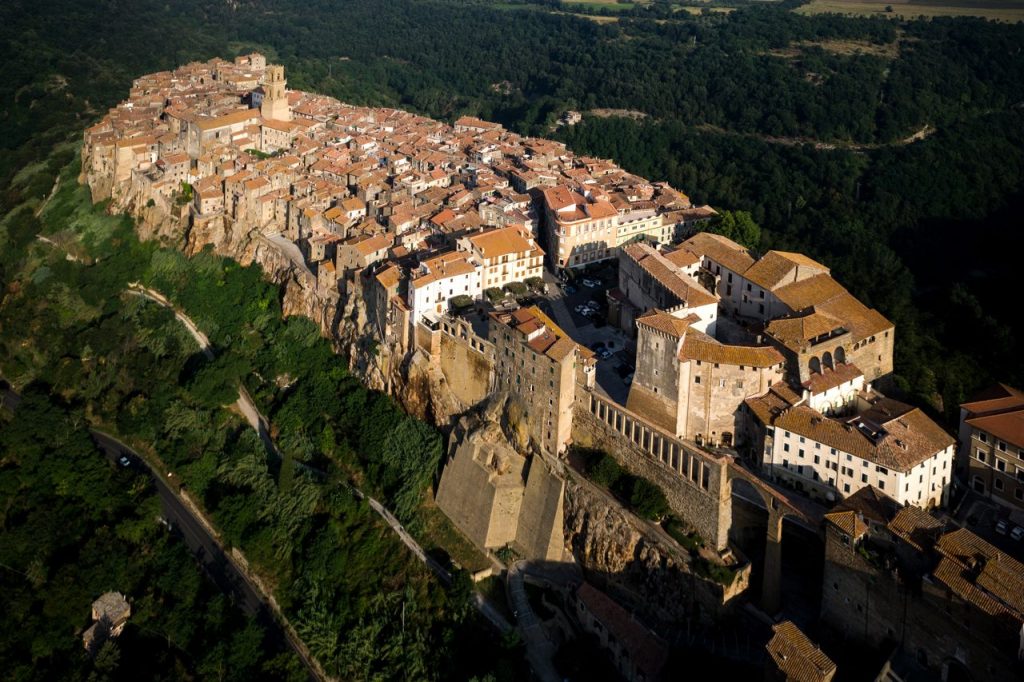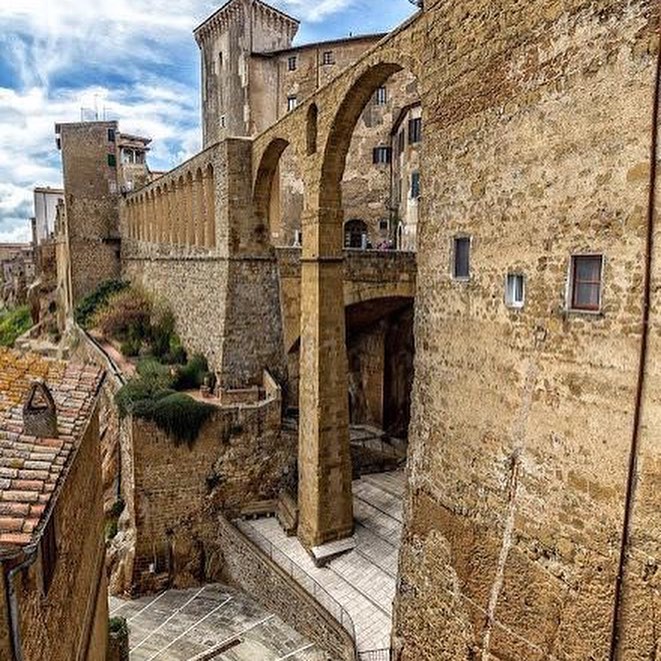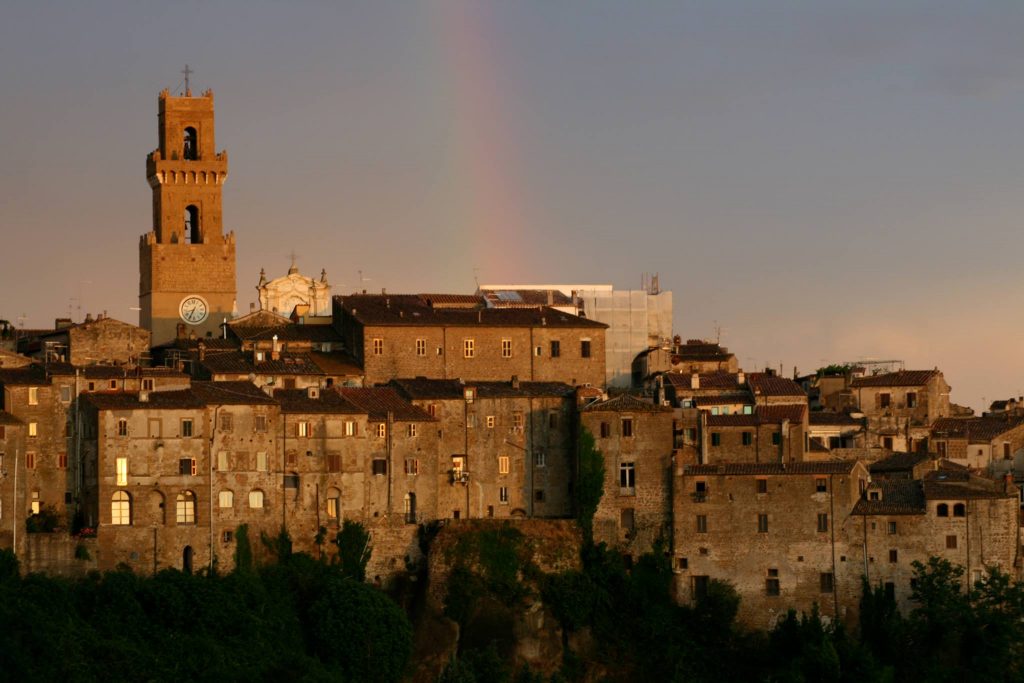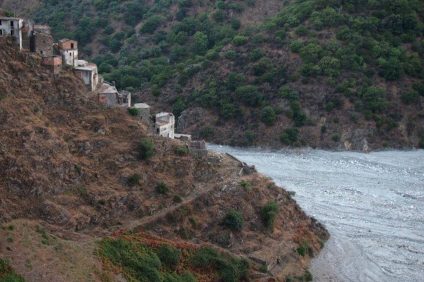There is a village in the province of Grosseto with particular characteristics that make it unique in the world. It is perched on a hill and around it has rugged cliffs between caves and tuff quarries. In the heart of Toscana there is the municipality of Pitigliano, considered the little Jerusalem of Italy due to its historical roots that recall the Jewish community that inhabited it. We present an itinerary to discover this place to visit.

Pitigliano between enchanting views and monuments
The municipality in the province of Grosseto is part of the association "The villages of Italy". In fact, it has a characteristic historic center and a rich architectural and historical heritage. Once Pitigliano and its inhabited center had ancient Etruscan settlements. And there are still signs of this ancient civilization throughout the territory. Like the necropolis and the roads that have been carved out of the rock between high tuff walls. Pitigliano dominates the valleys of the Lente, Meleta and Prochio streams.

The signs and testimonies of the Jewish community
Pitigliano is also known as the little Jerusalem for the ancient testimonies of the Jewish community. In particular, the signs are evident in the historic center. From the synagogue of the sixteenth century and then the Jewish cemetery which dates back to the seventeenth century and is located in the area south of the village. Also present are the Unleavened Oven, the Kosher Butcher, the Cellar and the Ritual Bath.

Among the monuments there are the many churches of Pitigliano such as the Duomo dedicated to St. Peter and St. Paul which dates back to the thirteenth century. It has a baroque interior, while the facade is in late baroque style and embellished by the presence of a medieval bell tower. And then the santuario of the Madonna delle Grazie, built in the XNUMXth century. There Church of Santa Maria Assunta which dates back to the XNUMXth century in neo-Romanesque style. There are also many palaces in Pitigliano, such as Palazzo Bruscalupi, Palazzo Incontri, Palazzo Lucci-Petruccioli, the hospital of the Poor, the writing desk of the Fortresses, the Palazzo della Fiscaleria. And still there Fontana of the Seven spouts which dates back to the mid-sixteenth century. To visit also the Civic Archaeological Museum of Pitigliano inside the noble palace of the Orsini. The museum contains tools and objects of Etruscan origin.

The historical origins of Pitigliano
There is a story that many know between truth and legend and which concerns the foundation of this city. It is said that it was founded by two young Romans Petilio and Celiano fleeing Rome after the theft of Jupiter's golden crown. They hid in this area giving rise to a first community. But according to historical evidence it seems that the area was inhabited at the time of the Neolithic. Until then the arrival of the Etruscans.

There are numerous events that Pitigliano offers its visitors throughout the year. All stopped for the moment and postponed to a better period. But the Torciata di San Giuseppe is certainly to be scheduled in March, the Infiorata in June, the Feast of the Farmer and Goblets of Stars in August, the County Festival. And then the “Settembre DiVino” with the party in the tufaceous cellars. Not to forget Christmas.





